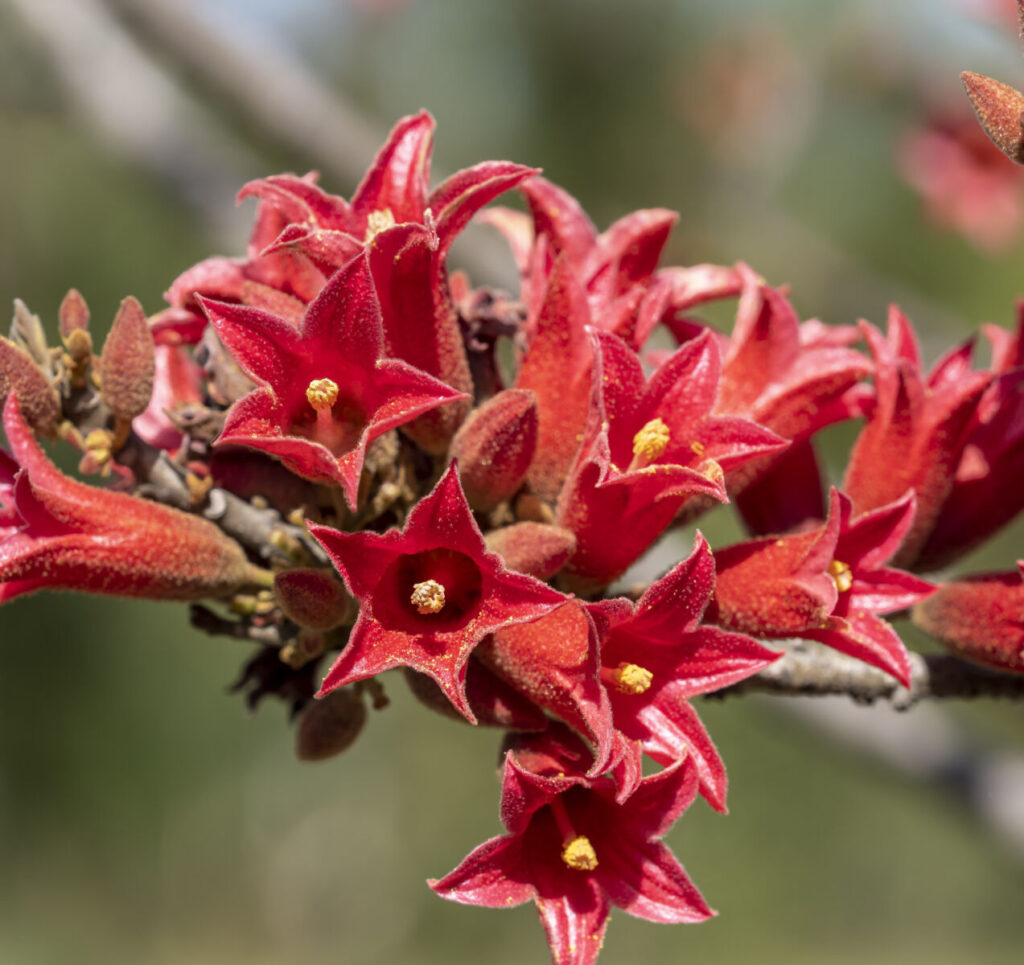APS NSW receives many emails with queries about native plants. These are passed on to our experts group. Glenda Browne summarises responses to a recent request.

We received a request for detailed instructions on propagating kurrajong trees from someone who had just harvested almost 50,000 seeds. Kurrajongs are a useful tree because they withstand competition and survive in very dry conditions. But they don’t like wet feet.
Kurrajong seeds have to be removed from the follicles using gloves, and shaken in a jar to remove the potentially irritating hairs.
Propagating
The following suggestions for propagation were provided:
- Use a seed raising mix of 1:1:1 coir peat:fine vermiculite:fine perlite or a commercial seed raising mix, preferably with the addition of some sharp river sand. You can use punnets or larger trays.
- Soak the seeds with warm water overnight before planting. Bury individual seeds at a depth twice the size of the seed, using a pair of tweezers. You can put about 20 seeds in a punnet.
- Stand punnets in a tray with water in the base or mist the punnets daily. Keep them in a sheltered well lit position but out of full sunlight. Allow good drainage.
- Plant seeds when the weather is a bit warmer, say in September. Views were mixed on whether heat mats would be useful to assist germination, or whether they might rot the seed.
- Because kurrajongs have such large seeds, another option is to sow each seed in a small tube, or even two or more seeds to a small pot so that the most vigorous seedlings can be selected and then potted on.
Seeds should germinate in a few weeks.
Potting on and planting out
Pot on when a large pair of leaves emerges. Potting-on mix should contain composted material and sharp sand similar to the seed raising mix mentioned above, although the components can be slightly larger.
You can transplant small kurrajongs into one-litre milk cartons. Because these are longer than many containers, they allow for formation of the long root system.
Kurrajongs can be slow growing. To counter this, some planters have grown the kurrajongs for five or more years in an area where they can be supervised. Kurrajongs grow a bulb-like structure for the first 60 cm to one metre underground, which allows for the planting out in the paddock of much larger plants than with other species.
In some areas you may need protection around the seedlings when they are planted out. This may only be needed for about two seasons until the young trees have become acclimatised.
Thanks to Dan Clarke, Maria Hitchcock and Dick Turner.
